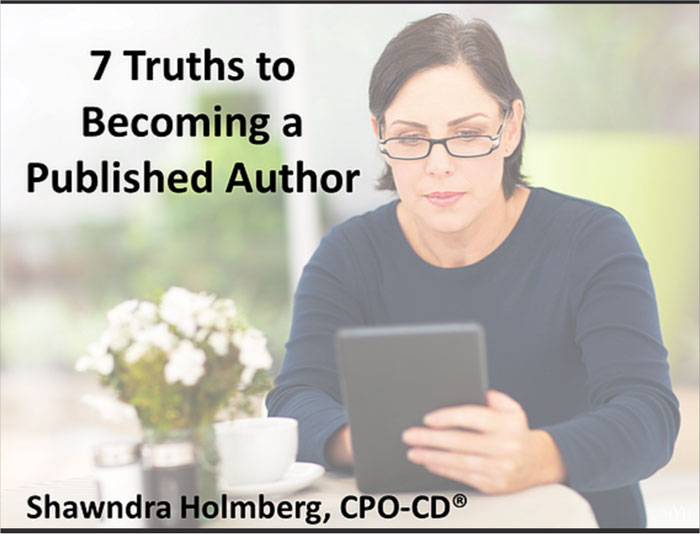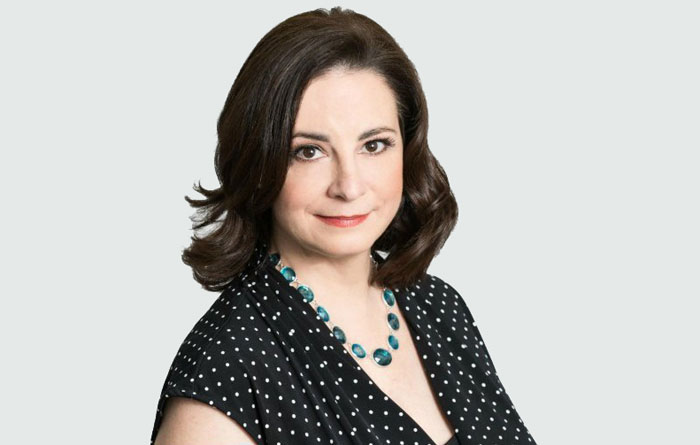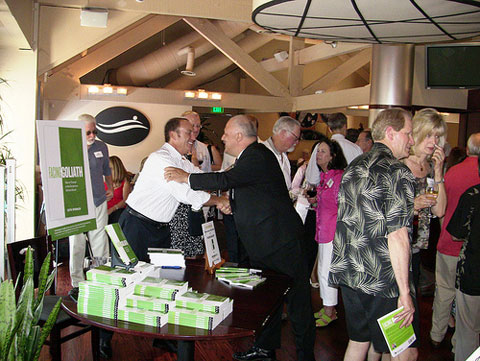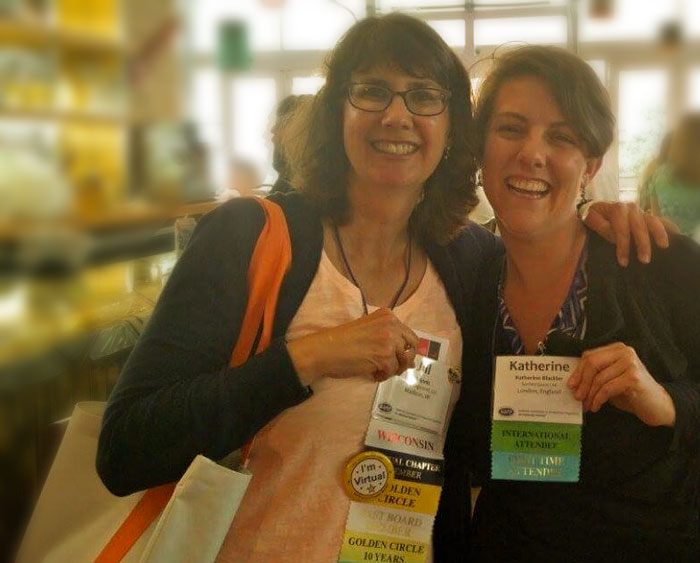How to write your book and get it in the hands of readers
This page may contain links to Amazon.com or other sites from which I may receive commission on purchases you make after clicking on such links. Read my full Disclosure Policy

NAPO’s Annual Conference and Organizing Expo took place in Atlanta a couple of weeks ago, and it’s become a bit of a tradition around here to follow up with a series of guest posts from organizers who attended, to share their experience with those who didn’t.
Starting off this year’s series, we have Kathy Vines from Clever Girl Organizing, with an overview of Shawndra Holmberg’s session, “Seven Truths to Becoming a Published Author.”

While at NAPO2016, I attended “Seven Truths to Becoming a Published Author,” presented by Shawndra Holmberg, CPO-CD, owner of Dhucks Organizing Service. Shawndra spoke at Conference about her passion for guiding, mentoring, and coaching fellow writers, through her business, HYH (Hold Your Hand) Book Coach.
This session at NAPO2016 in Atlanta was one of my most anticipated slots on my schedule. I’ve been working on my first book and have been craving expertise on how to move this collection of thoughts and words out of Microsoft Word and into the hands of readers it will impact.
Shawndra’s session did not disappoint! The session gave me the guidance, tools and resources for helping me give birth to my first book, and even about what comes after that.
The session was designed to share the Seven Stages to take a book “From Your Head to Their Hands”, and to share Seven Truths about each step that help move you from one stage to the next. These stages are:
- Inspiration: “I’ve got an idea for a book; I should write it!”
- Motivation: “I’m going to start! (And then stop, and start)”
- Creation: Actually writing the content
- Construction: First draft is done, now comes editing and the pieces that make a book
- Publication: Getting the book to be a book
- Connection: Getting the word out
- Destination: From my head to their hands
There was so much in each section, I had to work hard to distill what my top takeaway was in each. Let me walk you through each stage, the “truth” she shared, and my top takeaway:
1) Inspiration
Truth #1: “It is not about BEING a writer today; it’s about BECOMING a writer.”
So many of us have ideas in our heads, and they’re just waiting to come out in one form or another. Don’t let “I’m not a good writer” stand in your way; practice makes progress!
My top takeaway: Knowing my definition of success before I start is going to be key for me to keep focused and motivated throughout the long process.
2) Motivation
Truth #2: “Shut up and WRITE!”
Find your motivation to create what you’re creating, and be sure to rely on your strengths and support systems, to help stay on track and focused. Make sure to minimize the self-doubt in my head that will always be there, ready to provide an excuse for me NOT to write.
My top takeaway: Find the support system or group that works best for MY style, needs and interaction. There are a lot of options.
3) Creation
Truth #3: “Your book is born from the process of writing.”
Here, Shawndra focused on tools to help the writing process, and some tactical information, like word counts and common grammatical and formatting hang-ups.
My top takeaway: I wasn’t using any special software to help with the process of creating my book, but I’m rethinking that for sure.
4) Construction
Truth #4: “All the parts and piece – step by step, item by item, will get you further down the road than thinking about the whole thing!”
In this stage, she discussed the many parts and pieces that go into a book, and the role of the editor. Understanding that not all editors and processes were the same, and that there are ways of vetting them in advance, was eye-opening!
My top takeaway: If you have only one place you’re going to spend money on this process, spend it on an editor.
5) Publication
Truth #5: “You only have to market if you want readers.”
Another meaty section, with information all about the digital publishing world, including, formats, services that help you format, royalties, and those “oh, yeah” items like ISBN and Library of Congress numbers.
My top takeaway: For e-books, Kindle is where is it at. Spending time with other formats is okay, but it isn’t going to make the broad reach that Kindle does.
6) Connection
Truth #6: “There is only one right way to connect: YOUR WAY.”
It’s about marketing! This one is about the “getting the word out” process, including everything from the digital marketplace to handling rejection and bad reviews! But most importantly: you need to have a Connection Plan that works for you to guide you, based on:
- Definition of Success: How you define success in the beginning of your project
- Comfort Level: What are your strengths in reaching out?
- Readers’ Location: Find them where they are most likely to be.
My top takeaway: It’s easy to get distracted at this point by things like Amazon Rankings and sales numbers. If that’s not my definition of success at the beginning, I shouldn’t worry so much about it in the end.
7) Destination
Truth #7: “Success is a moving target. Remember what you defined it as, and move from there.”
This stage focused on getting the book out there, tracking how your efforts to market have gone, and getting the market and the customer to take action.
My top takeaway: This is great info to have… for when I write the NEXT book!
As you can see, this was a content-rich session, with everything from strategic guidance to tactical tips and tools I could put in place immediately. I’ve spent a lot of time thinking about my message; this was the perfect way to figure out how to get my message in the hands and minds of everyone else!
Related Posts:
- Book Dream to Right Team by Linda Samuels
- How to Effectively Define Your Self-publishing and Book Marketing Goals by BookWhirl
- Turn your blog into an e-book: The Easy Step-by-Step Guide to Turning Your Blog Entries into Money by Mishka Tolentino
- Shooting for the Stars: The NAPO Authorship SIG Bookstore by Hazel Thornton




What I love about this post is that all the steps can be applied to blogging, especially if you’re not fond of or are afraid of writing. “Shut up and write!” is an excellent beginning step and stops overthinking and fear from taking over. Great post. =)
Wow, Deb! I hadn’t thought of it that way but you are absolutely right. Thank you for sharing your brilliance. 😀
Thanks! And I totally agree, Deb Lee! And plan to apply it all in that world, too!
Very interesting idea about using special software. I would look into that. And I totally agree about the editing. Errors, grammatical mistakes and awkward wording definitely hurt one’s public image. I’ve been wrestling with the authorship concept. On the one hand, I know it elevates one’s standing and provides a “right to play.” On the other, I spend so much time with people for whom self-help books are creating a feeling of insufficiency that I’m conflicted. I only want to write the book that has something new to bring to the marketplace and would encourage, not deflate. Still thinking…
That’s an interesting perspective, Seana. I totally get where you’re coming from.
As to editing, I couldn’t agree more. There are many reasons that authors choose to self-publish, and although I respect their choice, I don’t think the fact that a book is self-published should be glaringly obvious due to typos and other errors. That’s a huge credibility killer for me.
I hear ya, Seana!
I’m looking at it less as “what do I need to put out there that is new in the world?” and more like “How can I bring the value that my in-person clients or blog readers already receive from me to a wider audience, in a different type of format?” I don’t need to be new; I need to be me, but louder 🙂
I’ve written my first novel and now I’m searching for a publisher. I’m considering self publishing as well but in this case I should do the whole marketing by myself, right?
Adam, neither Kathy nor I are experts on this topic, but I’m fairly certain that if you self publish, you are responsible for all aspects of getting your book out there, including marketing. A couple of the Related Posts at the bottom of this article touch on this subject, and I think you’ll find them very helpful.
Thanks for the advice, Janet! I’ll read the posts.
It is so important to find a good editor. As writers we can easily write and write, the editor will help you refine your piece. Great tips!
Agreed! Not only is it hard to be objective about our own writing, but we’re apt to overlook errors, because we know what it’s supposed to say so that’s what we see.
What an excellent review by Kathy of Shawndra’s NAPO session on book publishing! So many of these points resonate with me. I remember when I wrote my book, the emphasis was on the writing, editing, and getting it published. But once it was published, the focus shifted to “now what?” I moved into the marketing phase, which I hadn’t concentrated on before getting the book completed. Because I self-published, the making of the book consumed my energy.
My main marketing effort was to begin blogging. The posts were an extension of the ideas in the book. And even though I wasn’t overtly promoting my book, the blog gave me a platform to build an audience. It was a backward way of doing things, but this is how it worked out for me.
I really appreciate you sharing your experience, both in this comment and in your guest post which is included below under “Related Posts.” Thank you, Linda!
We all have so much to share, but figuring out how to do it is hard. Writing a book has so many steps. It’s not so easy. Good information.